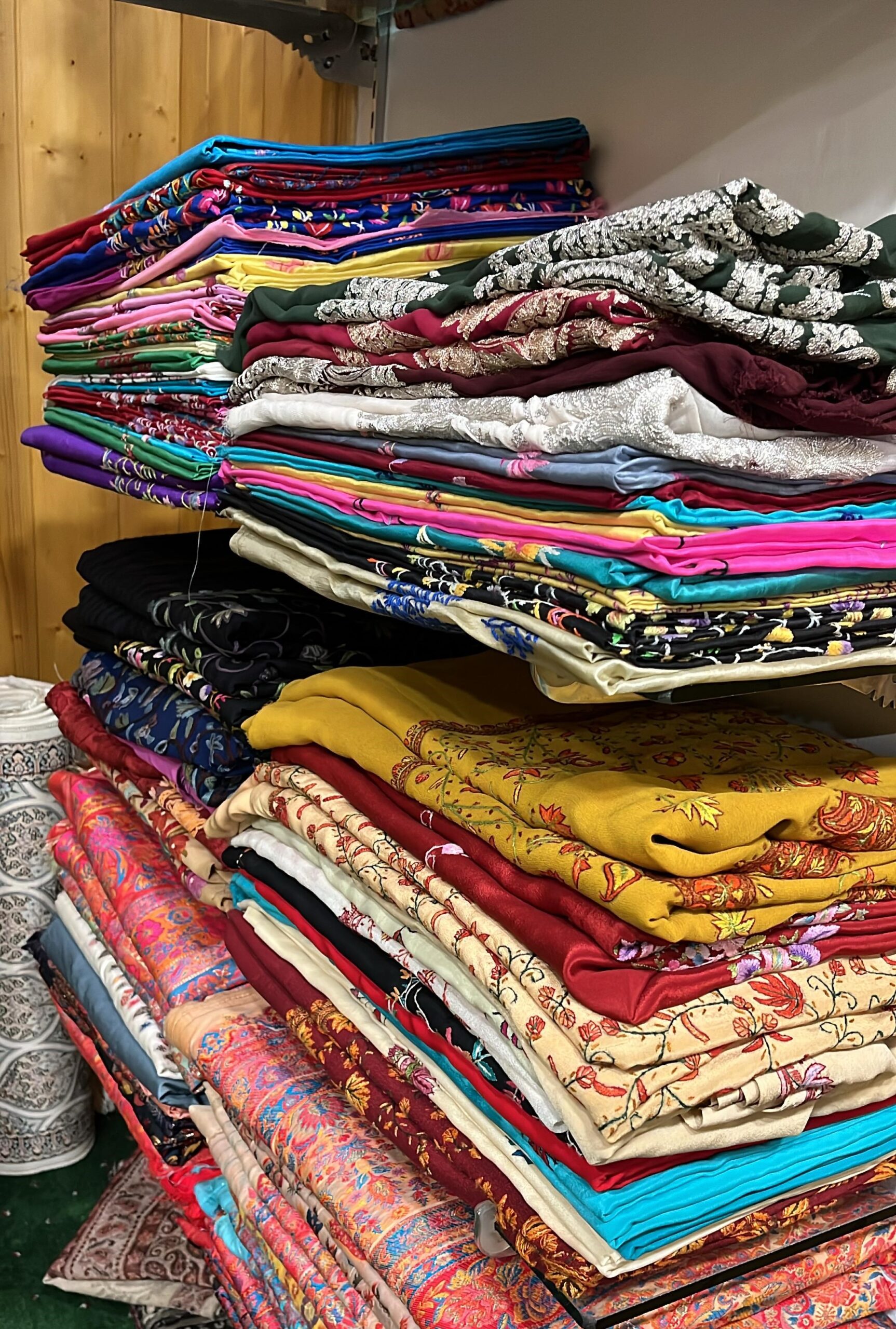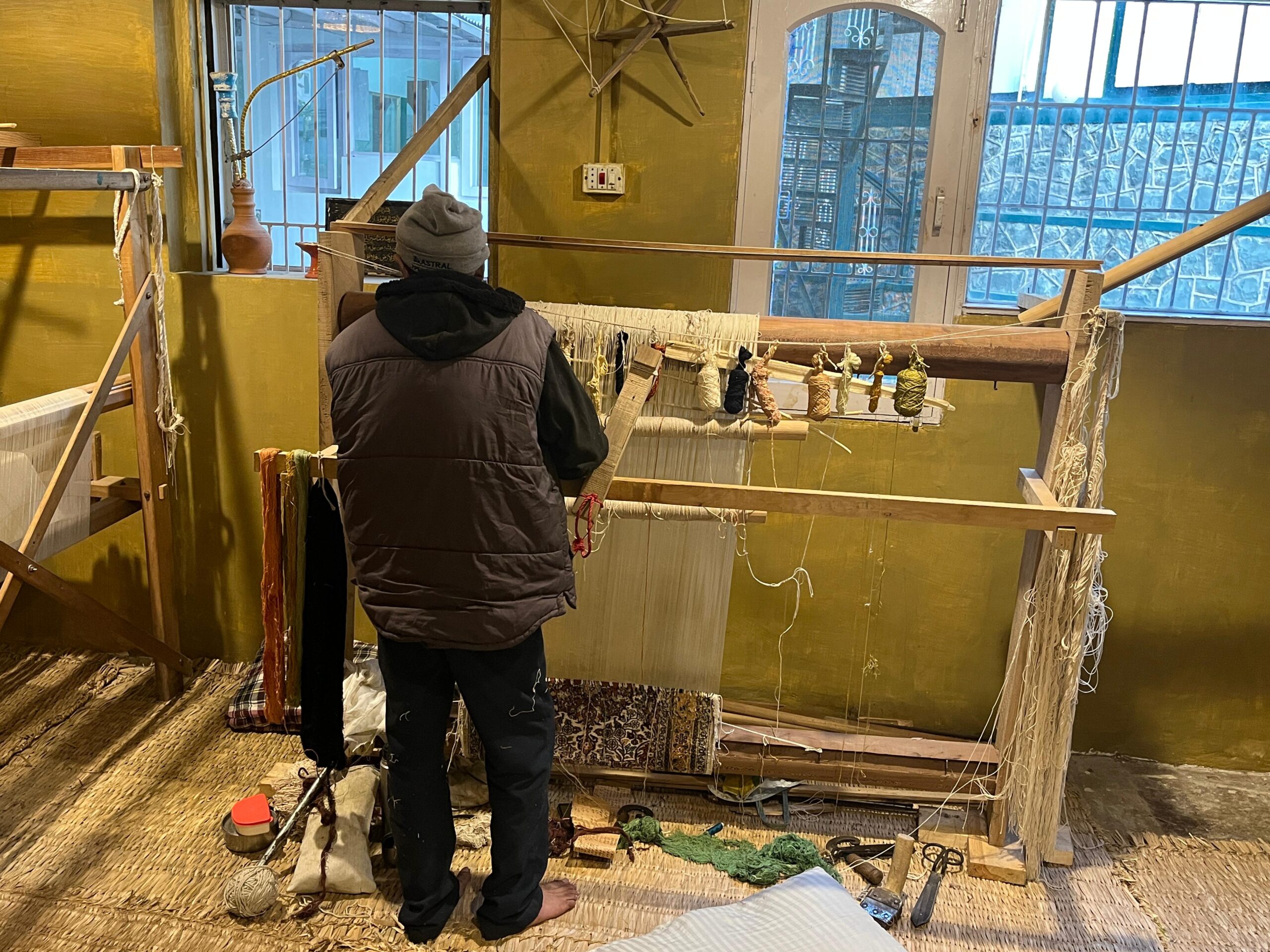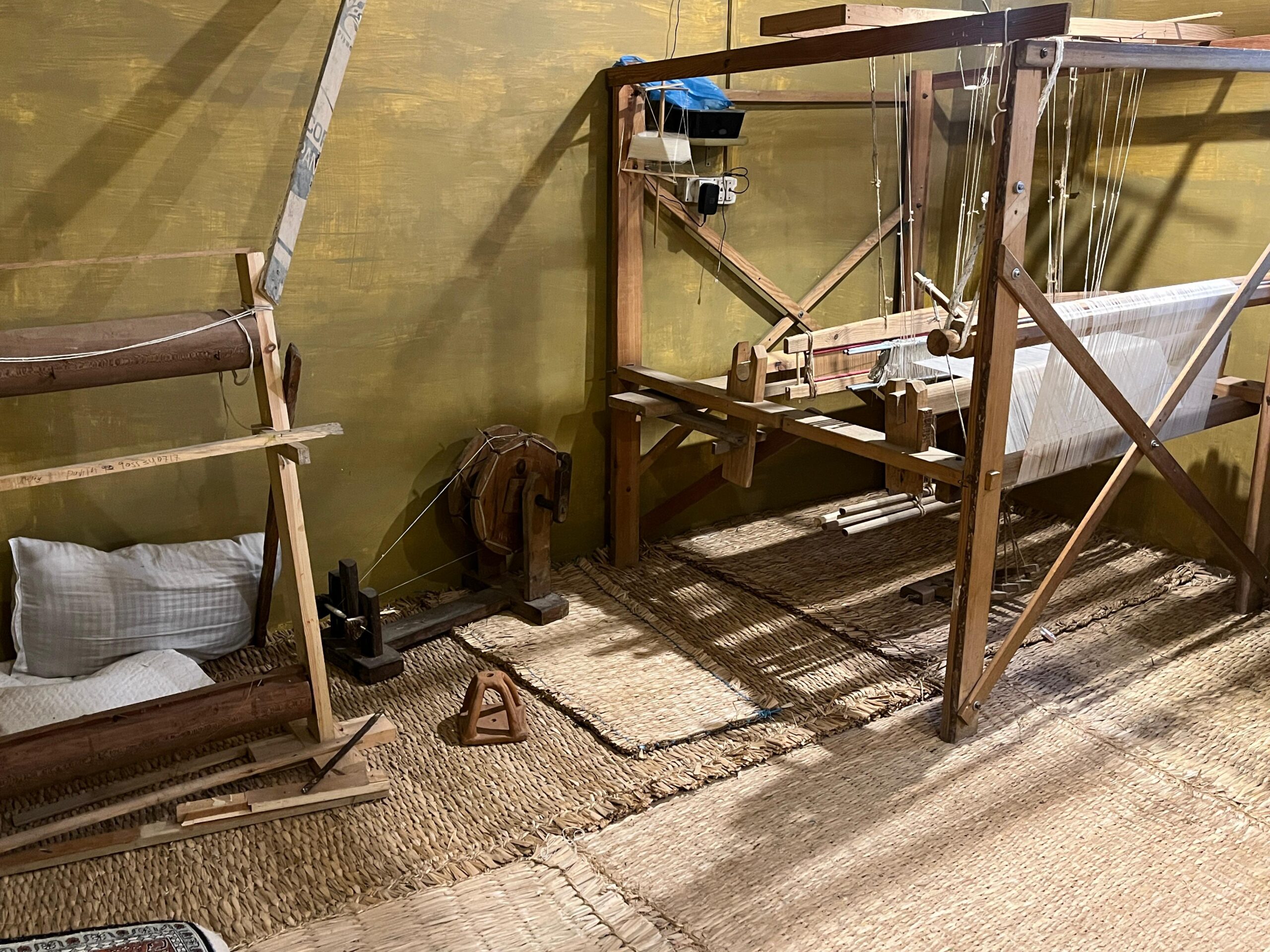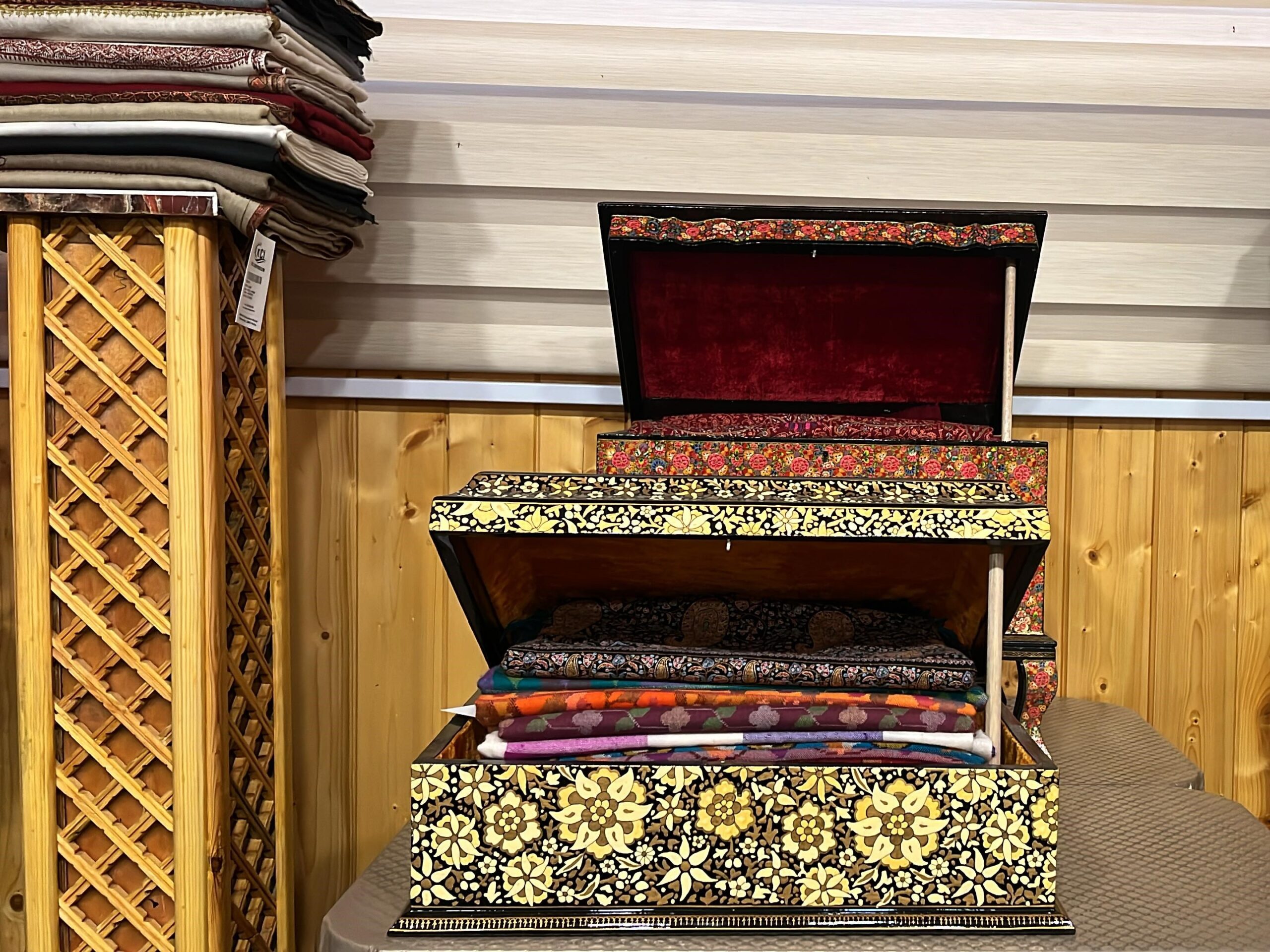No products added!
Our Experts Answer
For Care & Maintenance
1
About Pashmina ShawlsPashmina is extraordinarily soft and provides extra warmth. Pashmina is known as “Soft Gold” in Persian. Your beloved pashmina needs special attention due to its delicacy. The special nature of pashmina is the more you use more it grows on softness and comfort ability.
The world is full of fabrics, none excels in unique softness quality of texture, and beauty as the pashmina shawls of Kashmir. The pashmina shawls are soft, light, warm and have an elegant look and also regarded as a status symbol by those who admire it; a true pride of Kashmiri Craftsmanship. This luxurious fibre grows under the coarse and shaggy outer coat of a particular breed of domestic goat Capra Hircus which has its habitat in the Himalayan region of Tibet, China and Ladakh in Kashmir. This delicate deer like animal lives at a very high altitude where the winters are severe, the fibre from this handsome animal is used into the making of pashm which means the king of wool.
The world is full of fabrics, none excels in unique softness quality of texture, and beauty as the pashmina shawls of Kashmir. The pashmina shawls are soft, light, warm and have an elegant look and also regarded as a status symbol by those who admire it; a true pride of Kashmiri Craftsmanship. This luxurious fibre grows under the coarse and shaggy outer coat of a particular breed of domestic goat Capra Hircus which has its habitat in the Himalayan region of Tibet, China and Ladakh in Kashmir. This delicate deer like animal lives at a very high altitude where the winters are severe, the fibre from this handsome animal is used into the making of pashm which means the king of wool.
2
Making of Pashmina Shawls The first task is to rid it of the coarse hair, this is done by hand, each small tuft of Pashmina being teased out and hair removed one by one in the process a great deal of dust also come out, to rid the pashm of its natural oiliness, it is then thoroughly mixed with four made from soaked and ground rice, this is applied clamp and rubbed and the pashm is then teased out once more, tuft by tuft on a small wooden const.
This ancient treatment of raw material is still in practice, it makes raw wool soft and whiter and the material is ready for spinning on a Kashmiri spinning wheel or “Yender” which is made of wood and is about three feet in length with a wheel on one side and a thin iron rod about 12 inches fixed in two glass spindles on the other side, it is turned by the means of a handle and another cord passing over the rim which transfers the movement from the wheel to the spindle. A weaver weaves 4-6 inches of cloth in a day and on completion they are sent to embroider if need be and then for washing before we ship them out to you.
This ancient treatment of raw material is still in practice, it makes raw wool soft and whiter and the material is ready for spinning on a Kashmiri spinning wheel or “Yender” which is made of wood and is about three feet in length with a wheel on one side and a thin iron rod about 12 inches fixed in two glass spindles on the other side, it is turned by the means of a handle and another cord passing over the rim which transfers the movement from the wheel to the spindle. A weaver weaves 4-6 inches of cloth in a day and on completion they are sent to embroider if need be and then for washing before we ship them out to you.
3
Dry CleaningPashmina is an unusual fabric that becomes softer with each use. With good care you not only make it gentler to use but also add on to the life of the garment. The fine weaving of the Chyangra goats wool by Kashmiri artisans is an age old tradition that brings out the best of Pashmina. Such cloth must always be protected with the right care. It is advisable to dry cleaning Pashmina the garment after season’s use to maintain its durability. Natural wool and silk dry clean beautifully, helping to return to your precious Pashmina to a “like-new” condition. It also prevents loss of colour and change of texture or finish due to extensive use.
4
WashingIdeally, Pashmina should always be dry cleaned using organic solvents. It not only removes soil and stains from the fabric, but also maintains the shape, color, look of the garment. If that isn’t an option, use cold water to hand wash your Pashmina in a separate container/buck/sink. You may add a mild detergent such as baby shampoo and make her sure that it fully dissolves in the water before you soak your garment in it. Later wash the Pashmina softly while being extra careful of the handwoven trusses. To dry a Pashmina hang it out in the shade away from the strong wind and let it dry out slowly. Heavier garments can be kept in a towel and rolled in to drench out extra water before drying.
5
StorageStore your Pashmina in a muslin cloth to avoid the development of lint or short fibers that separate the surface of cloth or yarn. Fold it neatly inside out in moth-proof stuff. Keep the Pashmina in a drawer or storage box with dried Azadirachta Indica or Indian Lilac sachets or lavender sachets to repel moths. If you want to store your Pashmina over a longer season period ziploc bags can also be a solution for moths. Do not use naphthalene balls while storing the pashmina as it can mar its beauty and give it a permanent smell. Keep your Pashmina in a cool dry place preferably. Never expose your Pashmina to heat or extreme sunlight as it can damage the garment’s texture. Brush on the garment after every use softly to wear off any accumulated dust. Pashmina accessories are often passed down from generation to generation, to ensure yours does too, always opt for professional restoration every few years. Never hang a Pashmina as it may cause it to stretch and lose its shape. Instead always stack and fold it neatly to keep the material crisp. If your Pashmina develops a thread snag that is running across the fabric, take your fingernail and rub across the threads as though you are scratching something. Of course, don’t make it too rough because you will make it worse. Just follow the link of that thread all the way to the end and clip it. Taking care of your Pashmina is simple, all it needs is a little love and attention.






